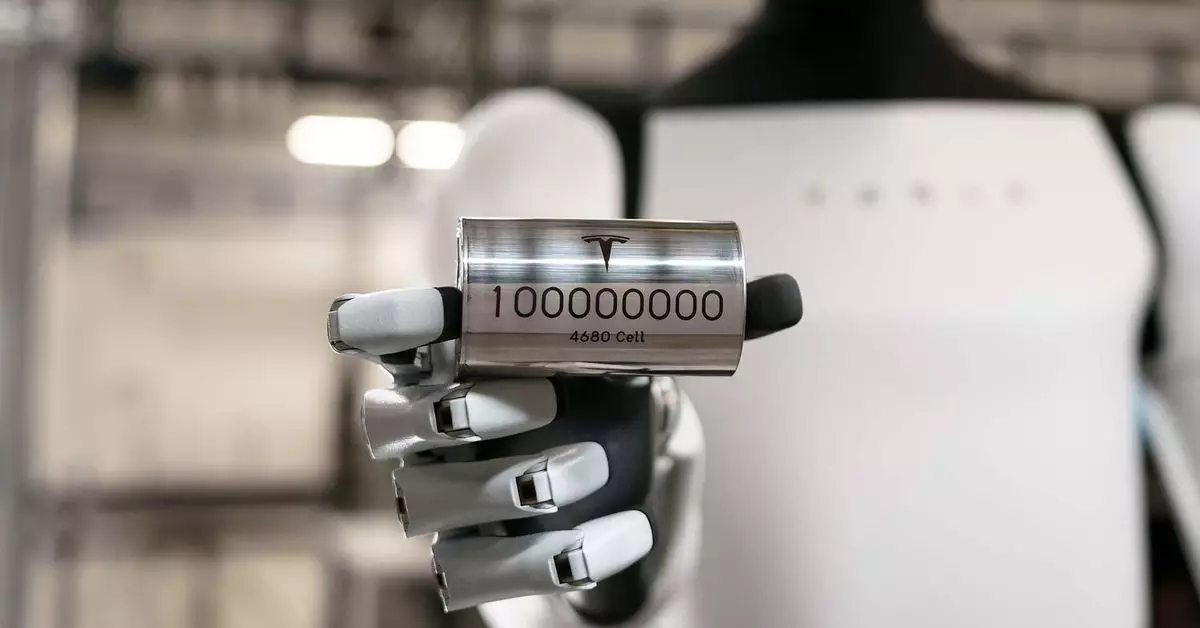The future of electric vehicle (EV) technology hinges significantly on battery performance and innovation. With fierce competition from established and emerging players, the stakes could not be higher. At the forefront of this dynamic landscape is Elon Musk’s ambitious pursuit of Tesla’s 4680 cylindrical cell technology, a venture that has incited skepticism from industry experts, notably Robin Zeng, the founder and chairman of Contemporary Amperex Technology Co., Ltd (CATL), the world’s largest EV battery manufacturer. Zeng’s critical stance raises vital questions about the viability and impact of Musk’s latest initiative.
Musk’s 4680 cells are promoted as a groundbreaking advancement in battery technology, boasting capacities purportedly five times greater than traditional battery cells used in Tesla’s fleet. The recent production milestone of 100 million cells highlights Tesla’s commitment to this technology; however, the questions surrounding feasibility linger. Zeng’s assertion—that Musk lacks a profound understanding of the battery technology necessary for success—gives voice to concerns about not just the technology itself but the management and strategic execution within Tesla’s operations. This challenge is exacerbated when considering the ambitious timelines Musk tends to set, often promising rapid advancements that may not come to fruition as expected.
A notable facet of Musk’s approach is his tendency to understate developmental timeframes, a pattern noticed by Zeng. The claim that technologies, which typically require extensive research and development, can achieve results in significantly shorter spans is a point of contention among professionals. This has led to accusations of overpromising, particularly regarding major initiatives like Full Self-Driving technology and, now, the 4680 battery development. Zeng’s insights suggest that real-world complexities of battery technology and production processes are not being sufficiently recognized, posing risks for Tesla as they navigate a competitive market landscape.
While Tesla is utilizing its innovative 4680 cells in flagship models like the Cybertruck, CATL continues to dominate the battery market with its lithium iron phosphate (LFP) batteries. These batteries, favored for their stability and cost-effectiveness, are included in numerous EVs beyond Tesla’s offerings, including models from Ford. The ability of CATL to deliver robust performance at scale highlights the efficiency of a different approach amid the challenges facing Tesla with its cylindrical cells.
In analyzing these developments, it’s clear that while both Musk and Zeng are influential figures in the EV battery sector, their methodologies and philosophies differ greatly. Zeng’s practical experience and realistic outlook challenge the prevalent enthusiasm surrounding Musk’s endeavors. The comparative efficiency and reliability of CATL could lead to a significant strategic advantage as the competition for market dominance intensifies. Thus, the trajectory of Tesla’s 4680 technology remains uncertain, teeming with potential yet shadowed by skepticism from industry veterans like Zeng. As the electric revolution continues unfolding, the necessity for grounded strategies and realistic timelines may play a decisive role in shaping the future of EV technology.

